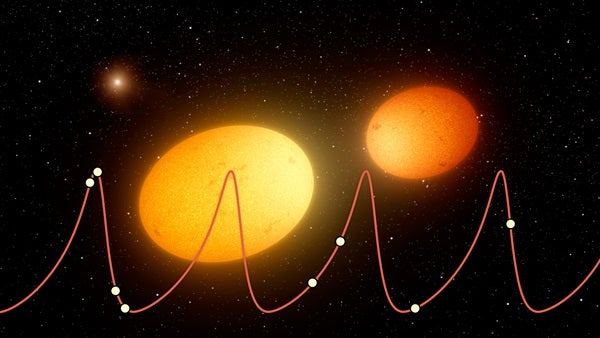A study using NASA’s Kepler space telescope discovered a large number of heartbeat stars, or binary stars that would look like an electrocardiogram if brightness were mapped out over time.
Scientists are interested in the heartbeat stars because they are binary systems in elongated elliptical orbits, which make them useful for studying gravitational effects of stars on each other.
Kepler discovered several heartbeat stars in the last few years; a study in 2011 it discovered star KOI-54 that increases in brightness every 41.8 days and a study in 2012 characterized 17 similar objects.
The distance between the two stars in a heartbeat star system varies as they orbit each other and can get as close as a few stellar radii to each other and as far as 10 times that distance during one orbit.
When the stars are at their closest encounter, the joint gravitational pull causes them to become an elliptical shape, which is why their light is so variable.
The mutual gravitational pull is the same type of “tidal force” that causes ocean tides on Earth. Tidal force also causes the diameters of the stars to rapidly fluctuate as they orbit each other, which makes them vibrate or “ring.”
Avi Shporer, NASA Sagan postdoctoral fellow at NASA’s Jet Propulsion Laboratory in Pasadena, California was lead author on a recent study of heartbeat stars that was published in the Astrophysical Journal. The study used the HighResolution Echelle Spectrometer (HIRES), an instrument that measures wavelengths of incoming light, to measure the orbits of 19 heartbeat star systems, the largest group ever characterized in a one study.
The study also suggests that some heartbeat star binary systems may have a third or even a fourth star in the system that hasn’t been detected yet.
Researchers are currently doing follow-up studies to search for third-star components in heartbeat star systems.










